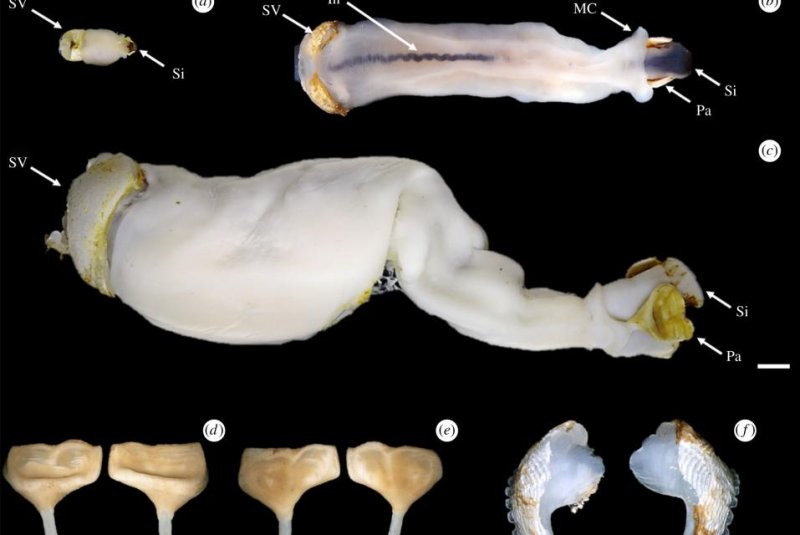Scientists found the new species of shipworm boring through limestone in a river in the Philippines. Photo by J. Reuben Shipway, et al./Proceedings of the Royal Society B
June 19 (UPI) -- Shipworms are named for their legacy as a menace to wooden boats. Today, they're a threat to docks, piers and other wooden infrastructure. But at least one species prefers a crunchier meal.
"We have found quite an extraordinary new species," Reuben Shipway, a researcher at Northeastern University, said in a video release.
An international team of scientists has discovered a new shipworm species that likes to bore through rocks. Researchers found the shipworm eating its way through carbonate limestone in a river in the Philippines.
Scientists actually first spotted the shipworm more than a decade ago, but weren't able to conduct a comprehensive study of the new species until recently.
In a study published Wednesday in Proceedings of the Royal Society B, researchers described the new species, Lithoredo abatanica, as "anatomically and morphologically divergent" and without the "adaptations associated with wood-boring and wood digestion."
The new species was so unusual, scientists have to create a new genus to properly classify it.
To study the new species, researchers broke up limestone samples and extracted the worms, placing them in tanks for observation. The new shipworm species relies on larger, flatter teeth than its relatives -- teeth better suited for boring through rock. The rock-eating worms are white and look more like worms than mollusks, according to the authors of the new study.
When researchers tested the mineral makeup inside the worms' intestines, they found it matched the mineralogical profiles of the rock samples from which they were extracted.
In the observation tank, researchers watched the bivalves eat their way through chunks of limestone. Scientists suspect the worms get the majority of their nutrition from bacteria that live in their gills, as well as from planktonic algae and bits of terrestrial plant -- not from the rock.
Instead, researchers suspect the rocks serve as a place of refuge, a place to live out their life cycle safe from predators. It's possible the bits of rock also aid in digestion.
Shipworms are bivalves, but their shells are rather small and do little to protect the animals from predators. Instead, tiny ridges on the shells allow it to be used as a drilling tool.
"Although many other invertebrate species are known to burrow in stone, we are not aware of other species that burrow in stone by ingesting the substrate," researchers write. "We suggest that this unusual habit is a consequence of this species having evolved from a wood-feeding ancestor, since the mechanism by which shipworms burrow in wood involves both ingestion and digestion of the excavated wood."
Though mostly thought of as pests, shipworms play an important role as ecosystem engineers. Just as microbes on land process dead leaves, shipworms aid wood turnover in mangrove and sea grass ecosystems.
Scientists suggest the new species "may also play a role in shaping its ecosystem and creating new habitats."















